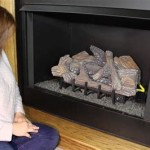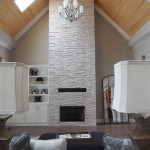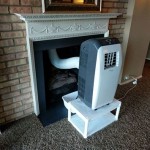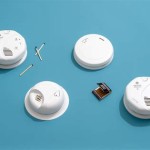Gas Fireplace With Electronic Ignition: A Modern Heating Solution
Gas fireplaces have long been a popular choice for supplemental heating and creating a cozy ambiance in homes. Modern gas fireplaces, particularly those equipped with electronic ignition systems, offer enhanced convenience, safety, and efficiency compared to older models with pilot lights. This article will delve into the features, benefits, operation, maintenance, and troubleshooting aspects of gas fireplaces with electronic ignition.
Understanding Electronic Ignition Systems
The primary difference between a traditional gas fireplace and one with electronic ignition lies in how the gas is ignited to initiate the flame. In a traditional gas fireplace, a continuously burning pilot light serves as a constant source of ignition. This pilot light consumes gas even when the fireplace is not in use, leading to energy waste and potentially posing a safety hazard if the pilot light malfunctions. Electronic ignition systems, on the other hand, eliminate the need for a standing pilot light.
Electronic ignition systems use an electronic spark to ignite the gas when heat is desired. When the user turns on the fireplace, a control module sends a signal to an igniter, which generates a spark near the burner. This spark ignites the gas, creating a flame. Once the flame is established, a flame sensor, such as a thermocouple or thermopile, detects the presence of the flame and signals the control module to keep the gas valve open. If the flame is extinguished for any reason, the flame sensor will detect the absence of the flame and shut off the gas supply, preventing gas from accumulating and creating a hazardous situation.
There are generally two types of electronic ignition systems: intermittent pilot ignition (IPI) and direct spark ignition (DSI). IPI systems use an electronic spark to ignite a small pilot light, which then ignites the main burner. DSI systems, on the other hand, directly ignite the main burner without the need for a pilot light. DSI systems are generally more energy-efficient than IPI systems because they eliminate the need for even a small pilot light to burn continuously.
Benefits of Electronic Ignition Gas Fireplaces
Gas fireplaces with electronic ignition offer several significant advantages over traditional gas fireplaces with pilot lights. These benefits contribute to increased energy efficiency, enhanced safety, and improved convenience.
Energy Efficiency: Electronic ignition systems significantly reduce energy consumption by eliminating the need for a continuously burning pilot light. This can result in substantial savings on gas bills over time. The lack of a standing pilot also reduces the amount of heat constantly being emitted, making the room more comfortable when the fireplace is not in use, especially during warmer months.
Enhanced Safety: These systems incorporate safety features such as flame sensors that automatically shut off the gas supply if the flame is extinguished. This prevents the accumulation of unburned gas, reducing the risk of gas leaks and potential explosions. The electronic ignition system also provides a more reliable and consistent ignition process compared to manually lighting a pilot light, further enhancing safety.
Improved Convenience: Electronic ignition fireplaces are typically easier to operate than traditional models. Many models come with remote controls or wall switches that allow users to turn the fireplace on and off with ease. Some models also offer features such as programmable thermostats and automatic flame height adjustment, further enhancing convenience.
Reduced Maintenance: With no standing pilot light, there is less chance of the pilot light going out due to drafts or debris. This translates to less frequent maintenance and fewer service calls. The electronic components are generally reliable and require minimal maintenance.
Operation and Maintenance of Electronic Ignition Gas Fireplaces
Operating a gas fireplace with electronic ignition is generally straightforward. However, it's important to understand the specific instructions provided by the manufacturer for the particular model. The following are general guidelines for operating and maintaining these fireplaces.
Starting the Fireplace: Most electronic ignition fireplaces can be started using a remote control, wall switch, or a button on the fireplace itself. The ignition process may take a few seconds as the system goes through its startup sequence. The user should ensure that the gas supply to the fireplace is turned on before attempting to start it. If the fireplace fails to ignite after several attempts, it could indicate a problem with the gas supply, ignition system, or flame sensor.
Routine Maintenance: Regular maintenance is essential to ensure the safe and efficient operation of the gas fireplace. This includes cleaning the glass door, inspecting the burner and surrounding area for debris, and checking the venting system for obstructions. The frequency of maintenance depends on the usage of the fireplace. It is generally recommended to have the fireplace professionally inspected and serviced annually by a qualified technician.
Cleaning the Glass Door: The glass door of the fireplace can accumulate soot and residue over time. This can be cleaned using a commercially available fireplace glass cleaner or a mixture of vinegar and water. It is important to allow the glass to cool completely before cleaning it to prevent cracking or damage. A soft cloth or paper towel should be used to wipe the glass clean.
Inspecting the Burner: The burner should be inspected periodically for any signs of corrosion, damage, or debris. If any debris is found, it should be carefully removed using a brush or vacuum cleaner. It is important to ensure that the burner ports are clear of obstructions to allow for proper gas flow and combustion.
Checking the Venting System: The venting system is responsible for removing combustion gases from the fireplace. It is important to ensure that the venting system is clear of obstructions, such as debris, nests, or collapsed sections. A blocked venting system can lead to carbon monoxide buildup, which is a serious safety hazard. A professional inspection of the venting system is recommended at least once a year.
Replacing Batteries: Many electronic ignition systems are powered by batteries. These batteries should be replaced periodically to ensure that the system functions properly. The frequency of battery replacement depends on the battery type and usage. It is important to use the correct type of batteries specified by the manufacturer.
Professional Inspection: An annual professional inspection is recommended to ensure that the gas fireplace is operating safely and efficiently. A qualified technician can inspect the burner, venting system, ignition system, and other components of the fireplace. They can also perform any necessary repairs or adjustments.
Troubleshooting Common Issues
While gas fireplaces with electronic ignition are generally reliable, they can occasionally experience problems. The following are some common issues and potential solutions:
Fireplace Fails to Ignite: If the fireplace fails to ignite, the first step is to check the gas supply to ensure that it is turned on. Also, check the batteries in the remote control or electronic ignition module. If the gas supply is on and the batteries are good, the problem could be with the ignition system, flame sensor, or gas valve. A qualified technician should be called to diagnose and repair the problem.
Pilot Light Won't Stay Lit (for IPI Systems): If the pilot light ignites but fails to stay lit, the problem is often with the flame sensor (thermocouple or thermopile). The flame sensor may be dirty, damaged, or improperly positioned. The flame sensor can be cleaned with a fine-grit sandpaper or steel wool. If cleaning doesn't resolve the issue, the flame sensor may need to be replaced. A qualified technician can perform this repair.
Unusual Odor: A gas odor is a serious safety concern and should be addressed immediately. If a gas odor is detected, the gas supply should be turned off immediately and the area should be ventilated. A qualified technician should be called to inspect the gas fireplace and gas lines for leaks.
Soot Buildup: Excessive soot buildup on the glass door or surrounding area can indicate incomplete combustion. This could be caused by a dirty burner, blocked venting system, or incorrect gas pressure. A qualified technician can diagnose and repair the problem.
Blower Malfunction: Some gas fireplaces are equipped with a blower that circulates warm air into the room. If the blower is not working, it could be due to a faulty motor, clogged blower blades, or a tripped circuit breaker. The blower motor can be tested with a multimeter. The blower blades can be cleaned with a brush or vacuum cleaner. The circuit breaker should be reset if it is tripped. A qualified technician can repair or replace a faulty blower motor.
Clicking Sound Without Ignition: A clicking sound without ignition usually indicates that the igniter is attempting to spark but is unable to ignite the gas. This could be due to a faulty igniter, a dirty burner, or a weak spark. The igniter can be tested with a multimeter. The burner can be inspected and cleaned. A qualified technician can diagnose and replace a faulty igniter.
By understanding the operation, maintenance, and troubleshooting aspects of gas fireplaces with electronic ignition, homeowners can ensure their safe, efficient, and reliable performance for years to come. Promptly addressing any issues that arise will help to prevent more serious problems and maintain the comfort and ambiance that a gas fireplace provides.

Superior 45 4200 Series Direct Vent Gas Fireplace Electronic Ignition

Napoleon D42tre Ascent Deep Electronic Ignition Direct Vent Gas Fireplace With Log Set

Napoleon B46ntre Ascent Series Electronic Ignition Direct Vent Gas Fireplace

Elevation 36 Direct Vent Fireplace Natural Gas Electronic Ignition

Napoleon E42xte Elevation Series Electronic Ignition 42 Inch Direct Vent Gas Fireplace

42 Outdoor Gas Fireplace Electronic Ignition Fine S

Fireplace Millivolt Electronic Ignition Valve Kit For Use With A Wall Switch 82k Btu

Superior 36 Inch Electronic Ignition Vent Free Outdoor Gas Fireplace With Remote Vre3236

30 Ruby Contemporary Intellifire Touch Direct Vent Fireplace Insert Blower And Remote Electronic Ignition Majestic

Electronic Ignition








